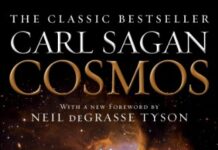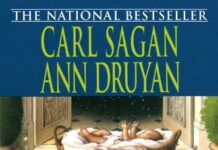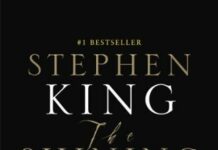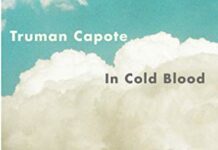
Ebook Info
- Published: 2016
- Number of pages: 385 pages
- Format: Epub
- File Size: 0.33 MB
- Authors: Carl Sagan
Description
Pulitzer Prize-winning author and astronomer Carl Sagan imagines the greatest adventure of all—the discovery of an advanced civilization in the depths of space.
In December of 1999, a multinational team journeys out to the stars, to the most awesome encounter in human history. Who—or what—is out there? In Cosmos, Carl Sagan explained the universe. In Contact, he predicts its future—and our own.
User’s Reviews
Review New York Times Book Review “Contact deals with issues…worth pondering.The range and depth of ideas is quite uncommon.” Newsweek “Like a good mystery, Contact keeps us curious to the end…ingenious and satisfying.”
Reviews from Amazon users, collected at the time the book is getting published on UniedVRG. It can be related to shiping or paper quality instead of the book content:
⭐ I can admit there are parts that aren’t perfect. There is a bit much exposition, I guess. And maybe other details are a bit off. However, I love it with all my heart. All the details. It’s just so thorough. Everytime I read this book (or watch the movie), I end up tearing up. Every single time. There is just so much to unpack. The last few chapters are worth the buildup for me. Completely worth it. I emotionally connect to Ellie so much that both when I saw the movie and read the book for the first time, I thought “There’s no reason for me to cry this much. And I’m nothing like Ellie and nothing sad has happened. Except… oh… whoa… I need a minute. Where has this been all my life??? I’m not crying because I’m sad. This is new. I need to wait before trying to feel this again”. This book fills me with wonder. It reminds me of all the good and bad parts about science. Plus, I am a sucker for discussions of religion and science and their overlapping magistra. I always expect to find flaws that ruin my experience of this book. I love it. I can’t be bothered. When a book speaks to you, you just have to roll with it and maybe find a therapist at some point. I can’t say this book will do the same for anyone else. It is dense. But I hope if you start, you finish. I love the whole ending. It has so much.
⭐ I had watched the movie version recently, so I thought to buy the book. The two are quite different in many respects. Sagan gets much more space to expound on his philosophy and put aside any thoughts that Matthew and Jodie are going to hook up. On the other hand you do get some idea of the rule book for scientific backbiting and seniors taking credit for the work of juniors; fortunately not as common as one might think.So was I disappointed in the movie after finally reading the book? No, movies are different than books. Both versions of Contact, in spite of their differences, are valid approaches to the same subject (with the movie inspired by the book, of course). My only beef as a scientist, and this applies to both versions of the story. My response to doubt is: let us take another ride and see if Jodie (or the group of 5 in the book) have the same experience. N=2 yields at least one-degree of freedom.
⭐ This is not a review of the content of the book but the item I received itself. This type of copy is very hard to read, by the end of it you will have a book with a broken binding. The inside margins are too tight. The book itself is at least an inch thick and the inside page margins are only about a quarter of an inch. In order to read all the words on a single page you nearly have to crease over the rest of the book putting great strain on the binding.The attached photo is the book folded open on a table. Spend more money don’t get the mass market paperback.
⭐ Four of the eight popular websites I checked to tally the most highly rated science fiction novels of all time included Contact among their top choices. Carl Sagan’s 1985 work about intelligent life in the universe is still widely read nearly four decades after it was written. Although I’d seen the film based on the novel when it appeared in 1997, I had never read the book. I’m glad I have. I don’t join the editors of those four websites in identifying it as among the best ever, but it’s a solid effort with much to recommend it.At its most basic level, Contact is one of the most influential First Contact stories in the genre—and deservedly so, since Sagan himself was among the world’s leading proponents of the Search for Extraterrestrial Intelligence (SETI). And the story is grounded in the science employed by the SETI Institute in its now decades-long search for messages from the stars. (SETI was founded in 1984, a year before the novel appeared.)A FIRST CONTACT NOVEL THAT RAISES LARGER THEMESSagan’s novel is the story of Dr. Ellie Arroway, a brilliant and driven astronomer who directs the search for intelligent life in the universe using what is called today the Very Large Array of radio telescopes in New Mexico. The story is driven by suspense and features elements of a thriller. It’s certainly full of surprises. But Sagan uses the tale to explore larger themes. He is preoccupied by the centuries-old debate between science and religion and by the irrationality of rivalry among nations that has so often led to war.A PRODIGY CONSUMED BY THE SEARCH FOR INTELLIGENT LIFE IN THE UNIVERSEEllie is an orphan. Her mother died when giving birth to her, and her father suffered a fatal heart attack when she was still a child. He cultivated her interest in science and math, buying her a telescope at an early age and teaching her about the planets and the constellations. The lessons stick. She whizzes through school and college in record time and obtains a PhD in astronomy. But then she turns down a prestigious faculty position at Harvard in favor of joining the staff of the Arecibo Observatory in Puerto Rico. There, she begins her search for intelligent life beyond the earth, persisting in the face of intense pressure from colleagues, funders, and friends alike who view the work as trivial and damaging to her career.Arecibo in the 1960s, and for decades afterward, housed the world’s largest single-aperture radio telescope. But it was surpassed in 2016 by a new radio observatory in China. And the telescope collapsed late in 2020. It is being dismantled as I write.ELLIE’S SEARCH BRINGS HER INTO CONFLICT WITH CHRISTIAN PREACHERSWhen the National Science Foundation cuts off funding for her work at Arecibo, Ellie moves to New Mexico to take up the directorship of the SETI program at the Large Array of radio telescopes. Eventually, she detects a message coming from the direction of the star Vega, twenty-six light-years distant. To confirm her findings, she shares the information with radio astronomers all over the world, thus launching a cooperative global effort to decipher the message.As word of her finding leaks to the public, Ellie comes under criticism by fundamentalist Christians. A notorious Right-Wing TV preacher excoriates her publicly for inviting the Devil to invade the Earth. To him, any sign of intelligent life in the universe can only mean either a sign from God or from the Devil, and he sees no sign of God in Ellie. But a much more thoughtful religious figure, Palmer Joss, engages her in detailed and intensive discussions about the meaning of her work. Their conversations raise questions in both her mind and his, illuminating the conflict between science and religion.ABOUT THE NOVEL’S STYLE AND STRUCTURESagan writes well, as we might expect from his lucid popular science presentations. He is, however, a scientist first and a novelist second. He excels at narrative and is less accomplished with dialogue. Paragraphs are typically long and dense, and both in the narrative passages and in the dialogue his intellectual chops come through clearly. Sagan was obviously a curious and well-read man with interests that ranged not just through science but history and religion as well.Contact unfolds in three roughly equal sections through a total of twenty-four chapters. The story is easy to follow, even if it occasionally bogs down with accounts of such abstruse topics as the history of the island of Hokkaido. Each chapter is headed by one or more epigraphs—a feature I almost always find tedious. Most of the snippets which authors insist on imposing on us as they open a new chapter strike me as obscure and pointless. However, Sagan’s choices were spot on. I found they enhanced my reading experience.PUZZLING DIFFERENCES BETWEEN THE NOVEL AND THE FILMAs I read through this novel, I kept searching my mind for recollections of the 1997 film Contact. I’d enjoyed the movie. So, I was puzzled. The images that kept cropping up seemed to bear little if any resemblance to what I was reading. So as soon as I put down the book, I streamed the movie online. Sure enough, the screenwriters had changed the story in substantial ways, and not for the better.For one thing, Hollywood made substantial changes in some of the principal characters. Ellie Arroway’s backstory is different. And Ellie alone travels to Vega, whereas in the novel she is one of five in a diverse international crew. But the tale is altered in even more significant ways.Sagan’s novel is grounded on three themes: the Search for Extraterrestrial Intelligence, the ages-old debate between science and religion, and the way the knowledge of life beyond planet Earth brings the nations together in unity. Of course, SETI is there at the center of the film as well as the novel. But the film gave short shrift to the other two themes. It paid lip service to the debate between science and religion, and there is little hint that the vast project to travel to Vega heralded global peace. No one watching the film is likely to walk away with a clear impression of the ideas Sagan strived to get across in the book. Oh, and they changed the ending, too. Leave it to Hollywood.ABOUT THE AUTHORThe late Carl Sagan (1934-96) was Professor of Astronomy and Space Sciences at Cornell University for most of his career. He was renowned as one of the country’s best science communicators, who brought to millions a new understanding of the cosmos. In his academic work, he was best known for his contributions to the Search for Extraterrestrial Intelligence. He was the author, co-author or editor of more than twenty books, including The Dragons of Eden, Cosmos, Broca’s Brain and Pale Blue Dot as well as this novel.
⭐ 1) Plot (5 stars) – After spending a lifetime listening to the stars, one astronomer finally hears a message to build a machine. But should humanity build it? What will the machine do? Will it be friendly or hostile? The decision pulls all facets of our modern society to the table for a heated debate and the tension of their interplay and the final result was fascinating. Sometimes, however, I felt the pace was a bit slow.2) Characters (4 stars) – Ellie is the brilliant scientist charging forward for the cause of the rational, while sometimes missing the subtleties of interpersonal relations or emotions. She’s a romantic which puts her at odds with her fellow scientists, but also deeply analytical which puts her at odds with much of humanity. On top of it, she’s a female in a male dominated profession which allows for sexual and gender conflict as well. I enjoyed riding along with her on this journey.3) Theme (5 stars) – Are we alone in the universe? It’s so immense that it seems almost mathematically impossible for us to be the only “intelligent” life form. But if so, why haven’t we made contact? Is it a lack of technology on our side or theirs? A lack of interest? A time or space distance too large to hurdle? Or are we just too different to understand each other? This was the surface question of the book, but underlying it was the theme of faith vs. empirical rationality, and how we need both to dream and advance. A message which was summed up beautifully in the book’s conclusion.4) Voice (4 stars) – Sagan became famous for translating esoteric scientific principles into simple and engaging parlance for non-scientists, and this ability shines through in his prose. Through Sagan’s eyes all the prosaic backdrop we take for granted–ants, stars, mathematic concepts–come alive with his curiosity and the teeming science behind them.5) Setting (4 stars) – The book takes place in a variety of science facilities on Earth, and a bit in outer space. All were described well and I felt transported there.6) Overall (4 stars) – An excellent story on the role of science in our present and future, made accessible through a strong lead, interesting plot, and a kindly professorial voice. Smart and fun. I’d recommend it.
⭐ A very thought provoking book. It brings out the the eagerness of mankind in total, our long but not-in-vain search for some little evidence, that we do want/ have neighbors in this cosmos, somebody greater and even better than us but above all our feeling that we are not alone in this universe!I personally liked the war of words between the Science and Religion. It was factual and brought out the frustrations involved in both sides of the argument.
⭐ Engaging exploration of the interaction of science and religion, and ways they can converge and diverge. While some of the story’s threads seemed at times to be distractions from the plot, they came together nicely in a final statement on beliefs, assumptions, and facts. Enjoyed listening to the Audible version; the narrator was excellent, especially for a story with a woman protagonist.
⭐ After attending an APS meeting in Denver, where learned to adapt Carl Sagan’s book Contact to my Astronomy classes.Student learn more from answering the questions I made using the book Contact then I think with a traditional college level introductory to astronomy text book.Most of all the Physics and Astronomy jargons are in Sagan’s book and very relevant to go with a traditional college level text book in Astronomy.A nice example I often use is to refer to the hour angle of Vega as mentioned in the book and show students using a “The Night Sky” planar where Vega is located, at 19th hour and on a plastic globe model of the celestial sphere.
⭐ This is my first book I’ve read by Carl Sagan and it was a spectacular ride. It teases all your emotions. So,what would happen in society in all parts of the world IF contact was made?, this is as real as your going to get in my opinion. I saw the film years ago and was upset by the ending but this book covers and goes over what really happened on that trip through the galaxy, and of course the novel is always better. What I got most from this read was an actual education, I learned more science in this book than in school(do they still teach science in school?),I finally understand Pi. Most worthy of what I got out of this book since I’m an Atheist myself was the discussions between characters about the interwoven arguments between science and religion. As well as what an entire world would go through mentally if a alien being was known to us. Fear,happiness,questioning faith,and a feeling that us humans are very very small, and how a world can come together in such a crisis or should I say ‘such a moment in our history’.Sagan has a incredible style that is very well thought out and scientific, yet explains it to the reader in such an easy to understand way that like I said, is understood by the casual and hardcore reader. His character development is on point, with so many main characters its hard to fully understand their situations but Sagan had woven their origin perfectly and no character is felt as lackluster or incomplete. I had feelings for these people,loving and hating characters is a sign of great writing.I urge everyone to give this a try for you will learn something of the human race, religion, science, philosophy,and world government, economics and the lessons we need to learn if such a scenario did happen for REAL, the coming together as a species for the benefit of the world. A must read and I’m still thinking about this story days after I finished.
⭐ Contact is one of my favorite movies. This book is just enough the same and just enough different to make it special on its own. There were a few wordy sections I just skipped over, but in the end, the journey was well worth it. I actually prefer the last bit of the book to the very last scene in the movie – and that’s saying a lot. Both are very human and speak to us all.
Keywords
Free Download Contact: A Novel in Epub format
Contact: A Novel Epub Free Download
Download Contact: A Novel 2016 Epub Free
Contact: A Novel 2016 Epub Free Download
Download Contact: A Novel Epub
Free Download Ebook Contact: A Novel




